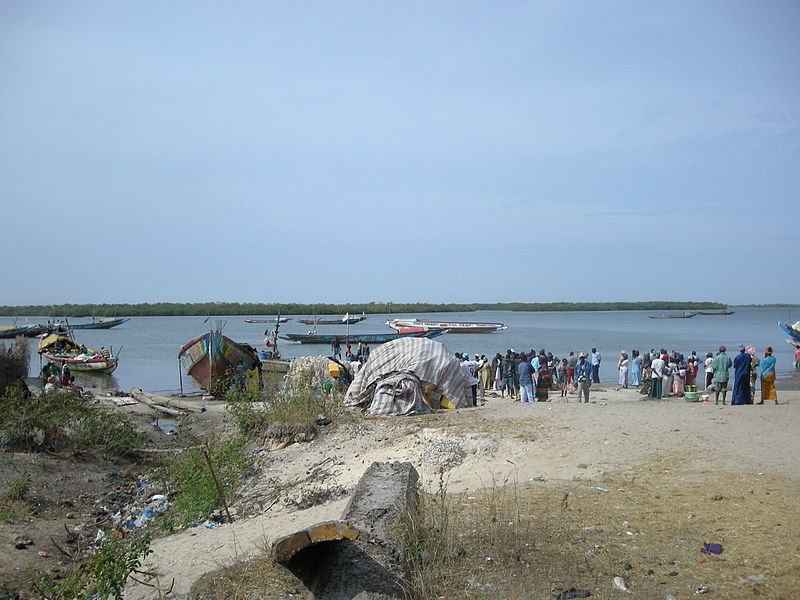 Port of Elinkine in Casamance, Senegal
Port of Elinkine in Casamance, SenegalSource: https://commons.wikimedia.org/wiki/File:Elinkine6.JPG
Author: Ji-Elle

Senegal is a country in western Africa. It covers 196,723 sq km (76,000 sq mi) and has a population of 13.7 million people. The capital and biggest city is Dakar. Senegal is bordered by Mauritania to the north, Mali to the east, Guinea to the southeast and Guinea-Bissau to the south. It completely surrounds The Gambia on three sides. Senegal also has a coastline facing the Atlantic Ocean to the west.
 Baobab and Acacia trees in Bandia Reserve, Senegal
Baobab and Acacia trees in Bandia Reserve, SenegalSource: https://commons.wikimedia.org/wiki/File:BaobabElephantBandia.JPG
Author: Myriam Louviot

Senegal observes the Coordinated Universal Time (UTC+0). Its official currency is the CFA franc (XOF). The electricity here is 230V/50Hz using European plug. The phone IDD code is +221.
In 2010, Senegal had an estimated nominal GDP of $13.472 billion, which translated to a per capita nominal GDP of $1,026. Its per capita GDP at purchasing power parity stood at $1,772.
Senegal is today a republic with a president and prime minister. French is the official language here, although local languages such as Wolof and Soninke are also recognized.
 Saint-Louis, Senegal
Saint-Louis, SenegalSource: https://commons.wikimedia.org/wiki/File:Saint-Louis_-_Ile_sud_(1).JPG
Author: Remi Jouan

The area where Senegal is located has been inhabited since prehistoric times. During the Age of Discovery, various European powers including the Portuguese, Dutch and British vie for trade in the area, but ultimately it was the French that managed to make Senegal its colony.
The path to independence for Senegal began in January 1959, when it merged with the former French Sudan to form the Mali Federation, which gained independence from France on 20 June, 1960. Within two months the federation broke up due, creating the states of Senegal and Mali.
Senegal experiences a tropical climate with a dry season from December to April and a wet season from June and October. The weather is hottest during the wet season, when the temperature averages 30°C (86°F) whereas during the dry season it averages 25.7°C (78.3°F).
 Rural life in the village of Sérère, Senegal
Rural life in the village of Sérère, SenegalSource: https://commons.wikimedia.org/wiki/File:VillageS%C3%A9r%C3%A8re.jpg
Author: ho visto nina volare

Planning your visit to Senegal
Visitors not requiring a visa include the citizens of the European Union (except for the 12 new member countries), Israel, Japan, Mauritania, Morocco, Malaysia, South Africa, Taiwan and the United States, if visiting for not more than 90 days.Dakar is connected by air with cities in Western Europe including Paris, Milan, Lisbon and Brussels. There are also regular flights with New York City, Casablanca and Nairobi.
Major Cities in Senegal
- Dakar - capital
- Kafountine
- Kaolack
- Kedougou
- Saint-Louis
- Tambacounda
- Thiès
- Touba
- Ziguinchor
 Latest updates on Penang Travel Tips
Latest updates on Penang Travel Tips

Copyright © 2003-2025 Timothy Tye. All Rights Reserved.

 Go Back
Go Back